Are you passionate about fashion and have a keen eye for style? If so, a career as a fashion stylist may be the perfect fit for you. As a fashion stylist, you have the opportunity to work in the exciting and dynamic world of fashion, creating unique and stylish looks for various clients.
But how do you become a fashion stylist? What skills and training do you need to excel in this competitive industry? In this career roadmap, we will guide you through the steps, requirements, and educational paths to becoming a successful fashion stylist.
Key Takeaways:
- Understand the steps and requirements to become a fashion stylist
- Develop essential skills such as styling, customer service, and trend research
- Explore educational options, including degrees and certification programs
- Build a strong portfolio and network to enhance your opportunities
- Stay up-to-date on fashion trends and industry developments
The Fashion Assistant Career Path
The career path of a fashion stylist often begins as a fashion assistant. Fashion assistants work closely with fashion designers, helping create original clothing, accessories, and footwear. They play a crucial role in the creative process, assisting with sourcing materials, coordinating fittings and photoshoots, and managing the production timeline. Fashion assistants are the backbone of the fashion industry, supporting the vision of designers and ensuring the smooth execution of their ideas.
As a fashion assistant, you will have the opportunity to learn from experienced professionals, gain hands-on experience in the industry, and build valuable connections. It is an entry-level position that allows you to develop your skills and understanding of the fashion industry from the ground up.
To become a fashion assistant, a bachelor’s degree in graphic design or a related field is typically required. This educational background provides a strong foundation in design principles and visual communication, which are essential in the fashion industry. Additionally, some fashion assistants also pursue certification as a Certified Nurse Assistant (CNA) to enhance their qualifications and demonstrate their commitment to the profession.
Key Responsibilities of a Fashion Assistant
- Assisting with the creation of sketches, patterns, and prototypes
- Conducting research on current fashion trends, styles, and materials
- Managing and organizing clothing, accessories, and footwear
- Coordinating and attending fittings, photoshoots, and fashion shows
- Assisting with the selection and purchase of materials and supplies
- Collaborating with designers, stylists, and other fashion professionals
- Handling administrative tasks, such as scheduling appointments and organizing records
As a fashion assistant, you can expect a competitive salary, with the average annual salary for a fashion assistant being $49,812. However, it’s important to note that salaries can vary based on factors such as location, experience, and the size of the fashion company or brand you work for.
The Wardrobe Assistant Career Path
Another entry point into the fashion styling industry is through the role of a wardrobe assistant. Wardrobe assistants work on set for photo shoots, fashion shows, or film and television productions, helping with styling and managing clothing and accessories. This vital position ensures that the wardrobe for each production is well-organized and visually appealing, complementing the overall aesthetic.
In order to pursue a career as a wardrobe assistant, a bachelor’s degree in graphic design is often preferred. This degree provides a solid foundation in design principles, color theory, and visual aesthetics, all of which are essential skills for effectively coordinating outfits and creating cohesive looks. Additionally, courses in textiles and costume design can enhance your understanding of fabrics and their suitability for different settings.
While formal education is beneficial, practical experience is equally important in the fashion industry. Internships and assistant roles allow aspiring wardrobe assistants to learn hands-on, honing their skills in styling, wardrobe management, and collaboration with production teams. The opportunity to work alongside industry professionals provides valuable networking connections and helps to build a portfolio.
When starting out as a wardrobe assistant, the average salary is around $29,049 per year. This figure may vary based on factors such as the location, the size and prestige of the production, and the experience level of the individual. As you gain more experience and establish a reputation for your skills, you can potentially command a higher salary and take on more significant projects.
Embark on your journey as a wardrobe assistant, and open the door to an exciting career in the intersection of fashion and entertainment.
The Fashion Stylist Career Path
The ultimate goal for many aspiring fashion stylists is to become a fashion stylist themselves. Fashion stylists are responsible for creating and curating looks for various clients, such as celebrities, models, or brands. They select clothing, accessories, and footwear and combine them to create cohesive and stylish outfits.
“Fashion is the armor to survive the reality of everyday life.”
– Bill Cunningham
As a fashion stylist, you have the opportunity to work with high-profile individuals and brands, shaping their visual identity and influencing current fashion trends. It is a dynamic and fast-paced career that allows you to express your creativity and personal style.
Salary and Education
According to industry data, the average salary for a fashion stylist is $45,524 per year. However, your earning potential can vary based on factors such as your experience, client base, and location.
To establish yourself as a fashion stylist, a bachelor’s degree in graphic design or a related field is commonly required. This educational background provides a solid foundation in design principles, color theory, and visual composition – essential skills for creating captivating and impactful outfits.
Experience and Expertise
Building experience as a fashion stylist is crucial for success in the industry. Most employers and clients look for candidates with 4-6 years of experience, during which you can develop your styling skills and build a portfolio that showcases your creativity and versatility.
During your professional journey, it’s important to stay updated on the latest fashion trends and industry news. Having a keen eye for aesthetics and attention to detail will help you curate visually stunning looks that captivate your audience.
Your Path to Success
To pursue a career as a fashion stylist, consider the following steps:
- Earn a relevant degree: Complete a bachelor’s degree in graphic design or a related field to gain foundational knowledge and skills.
- Build a portfolio: Showcase your talent by creating a diverse and impressive portfolio that highlights your ability to create visually appealing outfits.
- Network and collaborate: Connect with industry professionals, photographers, and models to expand your professional network and gain exposure.
- Stay updated: Continuously educate yourself on fashion trends, industry developments, and emerging designers to remain at the forefront of the fashion world.
- Market yourself: Utilize social media platforms, attend industry events, and establish an online presence to promote your services and attract potential clients.
By following these steps and leveraging your creativity and passion for fashion, you can embark on a fulfilling and successful career as a fashion stylist.
The Wardrobe Stylist Career Path
Similar to fashion stylists, wardrobe stylists focus on selecting and creating outfits. However, wardrobe stylists primarily work in theater, film, or television productions, where they are responsible for designing and coordinating costumes for characters. The wardrobe stylist plays a significant role in transforming the actors and bringing their characters to life through their clothing.
If you have a keen eye for detail and enjoy working behind the scenes to create visually impactful looks, a career as a wardrobe stylist may be the perfect fit for you. Not only will you have the opportunity to collaborate with a creative team, but you will also play a vital role in shaping the overall aesthetic of a production.
Salary: The average salary for a wardrobe stylist is $38,080 per year.
Education: While a formal education in wardrobe styling is not always a requirement, having a bachelor’s degree in specialized sales and merchandising can give you a competitive edge in this field.
Experience: In addition to a degree, gaining practical experience is crucial for success as a wardrobe stylist. This can be achieved through internships, assisting experienced wardrobe stylists, or working on smaller productions to hone your skills. Generally, having 4-6 years of experience in the field is considered desirable.
To give you a better idea of the wardrobe stylist career path, here is a breakdown of the typical steps involved:
- Earn a bachelor’s degree in specialized sales and merchandising or a related field.
- Gain practical experience through internships or assistant positions.
- Develop your skills in costume design, coordination, and visual storytelling.
- Build a network of industry professionals, including costume designers, directors, and production companies.
- Showcase your portfolio, demonstrating your ability to create cohesive and visually stunning costumes.
- Continue learning and staying updated on industry trends and techniques.
By following this career path and combining your passion for fashion with your creative talent, you can find fulfillment as a wardrobe stylist in the fascinating world of theater, film, and television.
| Experience Level | Salary Range |
|---|---|
| Entry Level | $28,000 – $40,000 |
| Mid-Level | $40,000 – $60,000 |
| Senior Level | $60,000 – $80,000+ |
Quote:
“As a wardrobe stylist, you have the power to transport audiences to different worlds through the costumes you create. It’s about capturing the essence of characters and conveying their stories visually.” – Emily Johnson, Experienced Wardrobe Stylist
The Store Manager Career Path
Another career path option for fashion enthusiasts is becoming a store manager. Store managers play a crucial role in overseeing the operations of a retail store and ensuring its success. They are responsible for planning and coordinating activities, managing staff, and providing exceptional customer service. If you have a passion for fashion and enjoy leading a team, this career path may be perfect for you.
As a store manager, your responsibilities will include:
- Overseeing daily operations, including sales, inventory management, and customer service
- Developing and implementing strategies to achieve sales targets
- Training and supervising store staff
- Maintaining visual merchandising standards
- Ensuring compliance with company policies and procedures
- Building and maintaining relationships with customers and suppliers
Store managers are typically well-compensated for their work. The average salary for a store manager in the fashion industry is around $46,950 per year.
To pursue a career as a store manager in fashion, a bachelor’s degree in business or a related field is commonly required. This educational background equips you with valuable knowledge in areas such as sales, marketing, and management, which are crucial for success in this role.
In addition to a degree, some store managers choose to enhance their qualifications by obtaining certification as a Certified Management Accountant (CMA). This certification demonstrates your expertise in financial management, budgeting, and decision-making, which are important skills for managing a retail store efficiently.
By following this career path and combining your passion for fashion with strong business acumen and leadership skills, you can thrive as a store manager in the fashion industry.
Skills and Qualities of a Successful Store Manager
| Skills | Qualities |
|---|---|
|
|
Is Being a Fashion Stylist Right for You?
Before embarking on a career as a fashion stylist, it is essential to assess whether it is the right fit for you. Consider the various career paths within fashion styling, the average salary expectations, and the necessary skills and requirements. Understanding these factors will help you make an informed decision about pursuing a career as a fashion stylist.
Career Paths
Fashion stylist career paths offer diverse opportunities within the industry. You could specialize as a wardrobe stylist, personal stylist, ecommerce/digital stylist, photoshoot stylist, runway/fashion show stylist, product stylist, or film/TV stylist. Each career path has its unique demands and rewards, allowing you to find your niche in the fashion world.
Salary Expectations
As a fashion stylist, salaries can vary depending on factors such as experience, location, and the specific role you pursue. On average, fashion stylists earn $45,524 per year in the United States. However, salaries can range from $31,000 to $65,000 per year, depending on various industry factors and individual accomplishments.
Skills and Requirements
A successful fashion stylist possesses a combination of creative and technical skills. While fashion trends and style knowledge are crucial, other skills like attention to detail, communication, and organizational abilities are equally important. Additionally, being adaptable, having a strong sense of aesthetics, and staying updated on industry developments contribute to a fashion stylist’s success.
Detailed requirements may vary depending on the specific career path you choose, but generally, a bachelor’s degree in graphic design, specialized sales and merchandising, or business is beneficial. Furthermore, gaining industry experience through internships or assistant positions can provide practical knowledge and build a strong foundation for your fashion styling career.
Summary:
Considering the various career paths, salary expectations, and necessary skills and requirements of a fashion stylist is crucial before embarking on this journey. It allows you to assess your fit in the industry and make an informed decision about pursuing a career as a fashion stylist.
#Complete Table
| Career Path | Average Salary |
|---|---|
| Wardrobe Stylist | $38,080 |
| Personal Stylist | $42,650 |
| Ecommerce/Digital Stylist | $55,030 |
| Photoshoot Stylist | $45,370 |
| Runway/Fashion Show Stylist | $47,770 |
| Product Stylist | $47,770 |
| Film/TV Stylist | $46,850 |
Fashion Stylist Career Paths and Salaries
As a fashion stylist, you have a diverse range of career paths available to you, each offering unique opportunities and salary ranges. Here are some of the popular career paths within the fashion styling industry:
- Wardrobe Stylist
- Personal Stylist
- Ecommerce/Digital Stylist
- Photoshoot Stylist
- Runway/Fashion Show Stylist
- Product Stylist
- Film/TV Stylist
Each of these career paths allows you to work in different settings and cater to various clientele. Whether you’re curating looks for fashion shows, styling outfits for online retailers, or creating costumes for film and TV productions, there is a fashion stylist career path that aligns with your interests.
When it comes to fashion stylist salaries, it’s important to note that earnings can vary based on factors such as location, experience, and client base. The average annual salary for a fashion stylist in the United States is $45,524, with earnings ranging from $31,000 to $65,000 per year.
To give you a better understanding of the potential salary ranges, here is a breakdown of the average salaries for different fashion stylist career paths:
| Career Path | Average Salary |
|---|---|
| Wardrobe Stylist | $38,080 |
| Personal Stylist | $40,416 |
| Ecommerce/Digital Stylist | $43,274 |
| Photoshoot Stylist | $45,360 |
| Runway/Fashion Show Stylist | $46,940 |
| Product Stylist | $47,184 |
| Film/TV Stylist | $49,238 |
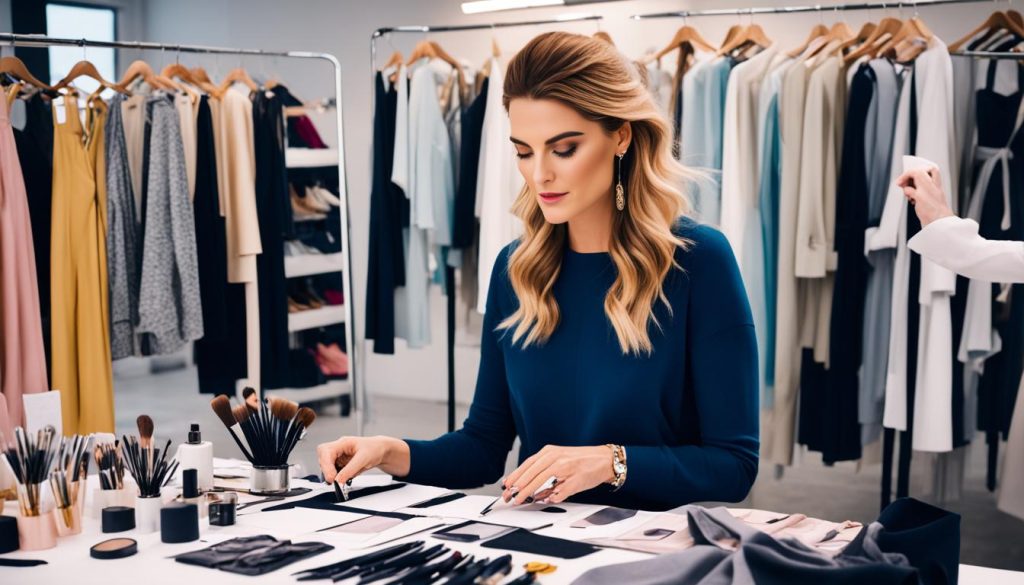
Keep in mind that these figures represent average salaries, and your earnings as a fashion stylist can be influenced by factors such as your expertise, reputation, and client base. It’s also worth noting that with experience and a strong portfolio, you have the potential to earn higher salaries and expand your career opportunities.
When considering your fashion stylist career path, be sure to weigh the pros and cons of each option, considering factors such as your personal interests, skill set, and desired salary range. Ultimately, choose a career path that aligns with your passion for fashion and offers the growth and fulfillment you’re seeking.
Essential Skills and Requirements for Fashion Stylists
To excel as a fashion stylist, certain skills and requirements are essential. As a fashion stylist, you need to possess:
- Expertise in editorial photo shoots: You must have the ability to conceptualize and execute visually appealing and impactful photo shoots.
- Product knowledge: It is essential to stay up-to-date with the latest fashion trends, designers, brands, fabrics, and materials.
- Customer service: Strong interpersonal skills are vital for building client relationships and understanding their preferences and needs.
- Sales floor management: You should be adept at managing inventory, coordinating with sales teams, and optimizing the visual merchandising of products.
- E-commerce: Familiarity with online platforms and trends is crucial for styling looks for digital campaigns and online marketplaces.
- Editorial styling: You should have the ability to curate unique and eye-catching outfits for editorial spreads and fashion publications.
- NYC fashion scene familiarity: Having a deep understanding of the fashion industry and trends in New York City, the fashion capital, is highly advantageous.
- Wardrobe management: Efficient organization and maintenance of clothing, accessories, and props are essential for a successful fashion stylist.
- Social media skills (particularly Instagram): Proficiency in leveraging social media platforms to promote your work and connect with clients and influencers.
- Art direction: The ability to provide creative direction and collaborate with photographers, models, hair stylists, and makeup artists.
- Knowledge of fashion trends and style: Staying informed about current and emerging fashion trends and having a keen eye for style and aesthetics.
- Ability to work with clients to achieve desired looks: Understanding client preferences and fashion aspirations while balancing them with practical considerations.
- Strong organizational and communication skills: Detailed planning, effective communication, and time management are crucial for success.
- Proficiency with styling tools and products: Skillful use of styling equipment, such as steamers, irons, sewing machines, and product knowledge.
- Flexibility to work irregular hours: Fashion styling often involves working long hours, weekends, and handling tight deadlines.
By possessing these essential skills and meeting the requirements, you’ll position yourself for a successful career as a fashion stylist.
| Skill/Requirement | Description |
|---|---|
| Expertise in editorial photo shoots | Ability to conceptualize and execute visually appealing and impactful photo shoots |
| Product knowledge | Stay up-to-date with the latest fashion trends, designers, brands, fabrics, and materials |
| Customer service | Strong interpersonal skills to build client relationships and understand their preferences and needs |
| Sales floor management | Adept at managing inventory, coordinating with sales teams, and optimizing visual merchandising |
| E-commerce | Familiarity with online platforms and trends for styling looks for digital campaigns and marketplaces |
| Editorial styling | Ability to curate unique and eye-catching outfits for editorial spreads and fashion publications |
| NYC fashion scene familiarity | Deep understanding of the fashion industry and trends in New York City, the fashion capital |
| Wardrobe management | Efficient organization and maintenance of clothing, accessories, and props |
| Social media skills (particularly Instagram) | Proficiency in leveraging social media platforms to promote work and connect with clients and influencers |
| Art direction | Ability to provide creative direction and collaborate with photographers, models, stylists, and makeup artists |
| Knowledge of fashion trends and style | Stay informed about current and emerging fashion trends and have a keen eye for style and aesthetics |
| Ability to work with clients to achieve desired looks | Understanding client preferences and fashion aspirations while balancing them with practical considerations |
| Strong organizational and communication skills | Detailed planning, effective communication, and time management |
| Proficiency with styling tools and products | Skillful use of styling equipment, such as steamers, irons, sewing machines, and product knowledge |
| Flexibility to work irregular hours | Availability to work long hours, weekends, and handle tight deadlines |
Having these skills and meeting the requirements will enhance your capabilities as a fashion stylist and open doors to various opportunities in the industry.
Fashion Stylist Education and Degrees
Education plays a crucial role in building a successful career as a fashion stylist. While a bachelor’s degree is the most common educational requirement, aspiring fashion stylists can also enter the field with an associate degree or even a high school diploma or GED. However, having a strong educational background in relevant areas can provide a solid foundation for long-term success.
Common Majors for Fashion Stylists
When pursuing a career as a fashion stylist, the choice of major can significantly impact your knowledge and skills in the industry. Here are three common majors that can enhance your understanding of fashion and styling:
- Graphic Design: A major in graphic design can teach you visual communication skills and enhance your ability to create visually appealing styling concepts. It also provides training in software and technology commonly used in the fashion industry.
- Specialized Sales and Merchandising: This major focuses on understanding consumer behavior, retail management, and product promotion. By studying specialized sales and merchandising, you gain valuable insight into how to market and sell fashion products effectively.
- Business: A business degree equips fashion stylists with essential skills in marketing, finance, management, and entrepreneurship. This knowledge is invaluable for those interested in starting their own fashion styling business or working in managerial positions within the industry.
While these majors are commonly chosen by fashion stylists, it’s important to remember that there is no one-size-fits-all approach. Ultimately, the key is to select a major that aligns with your interests and goals, allowing you to develop a well-rounded skill set in the world of fashion styling.

How to Become a Fashion Stylist
If you aspire to become a fashion stylist, you can follow these steps to kickstart your career:
-
Earn a relevant degree: Pursue a bachelor’s degree in graphic design, specialized sales and merchandising, or business. This foundational education will equip you with the necessary knowledge and skills for the fashion industry.
-
Gain experience: Start by working as a fashion or wardrobe assistant to gain hands-on experience in the industry. This will provide valuable insights and help you establish yourself in the field.
-
Develop essential skills: Hone your styling skills by actively participating in editorial photo shoots. Enhance your product knowledge and customer service expertise to deliver exceptional styling experiences.
-
Build a network: Connect with fashion industry professionals and brands to expand your opportunities. Attending networking events, joining relevant communities, and using social media platforms can help you grow your network.
-
Diversify your portfolio: Create a diverse portfolio showcasing your styling abilities across different styles and projects. This will demonstrate your versatility to potential clients and employers.
-
Market yourself: Promote your services through social media platforms, such as Instagram, and attend industry-specific networking events. Build an online presence that highlights your unique skills and style as a fashion stylist.
-
Stay updated: Continuously learn about new fashion trends, styles, and industry developments to stay relevant and innovative. Attend workshops, seminars, and follow fashion influencers and news outlets to stay ahead of the curve.
Becoming a fashion stylist requires dedication and perseverance, but by following these steps and maintaining a passion for fashion, you can pave the way for a successful career in the industry.
The Role and Responsibilities of a Fashion Stylist
In the dynamic world of fashion, fashion stylists play a vital role in shaping trends, creating stunning looks, and bringing their artistic vision to life. As a fashion stylist, your responsibilities can vary depending on the specific job, company, or industry you work in, but they all revolve around your ability to curate and deliver visually captivating fashion experiences. Let’s explore some of the common responsibilities and roles that fashion stylists undertake:
1. Managing and Organizing Clothing and Accessories
One of the fundamental responsibilities of a fashion stylist is to manage and organize an extensive collection of clothing and accessories. This involves categorizing, cataloging, and maintaining the inventory to ensure quick and efficient access to the right items for various projects and clients.
2. Designing Window Displays
Creating eye-catching and visually appealing window displays is another essential task for a fashion stylist. By skillfully arranging clothing, accessories, and props, you have the power to entice passersby and potential customers, effectively showcasing the brand’s image and captivating their interest.
3. Creating Inspiration Boards and Key Stories
Inspiration boards and key stories are crucial tools that fashion stylists use to communicate their vision and concepts to clients, colleagues, and team members. By combining visual elements such as fabric swatches, color palettes, and images, you can effectively convey the desired mood, theme, and aesthetics.
4. Researching Trends
Staying on top of current and emerging fashion trends is an integral part of the fashion stylist’s role. By conducting extensive research, attending fashion shows, and analyzing industry publications, you can provide valuable insights and ensure that your styling choices align with the latest fashion movements.
5. Managing Cleaning Activities after Hair Care Appointments
In collaboration with hair care professionals, fashion stylists often manage the cleaning activities required after hair care appointments. This includes ensuring that wardrobe garments are properly handled, cared for, cleaned, and maintained to preserve their integrity and prolong their lifespan.
6. Curating Looks for Various Occasions
One of the most exciting aspects of being a fashion stylist is curating looks for various occasions, whether it’s a red carpet event, editorial photo shoot, or personal styling session. You are responsible for selecting garments, accessories, and footwear that not only align with the client’s vision but also convey a cohesive and stylish narrative.
In addition to these responsibilities, as a fashion stylist, you must possess a keen eye for detail, a strong sense of aesthetics, and the ability to work collaboratively with clients, models, photographers, hair and makeup artists, and other creative professionals. Your role requires you to multitask, think creatively on your feet, and adapt to different scenarios to bring out the best in your styling endeavors.
| Responsibilities | Description |
|---|---|
| Managing and Organizing Clothing and Accessories | Ensuring proper cataloging and maintenance of fashion inventory |
| Designing Window Displays | Creating visually captivating windows to attract customers |
| Creating Inspiration Boards and Key Stories | Communicating vision and concepts through visual representation |
| Researching Trends | Staying updated with current and emerging fashion trends |
| Managing Cleaning Activities after Hair Care Appointments | Ensuring proper handling and care of wardrobe garments |
| Curating Looks for Various Occasions | Selecting garments and accessories for cohesive and stylish looks |
A career as a fashion stylist demands a unique blend of creative flair, organizational skills, and a deep understanding of fashion aesthetics. It’s an opportunity to immerse yourself in a world where you can bring your artistic vision to life, collaborate with industry peers, and make a lasting impact on the fashion landscape.
What It Takes to Be a Fashion Stylist
To be a successful fashion stylist, certain qualities and skills are essential. As a fashion stylist, attention to detail is crucial. You must have a keen eye for fashion trends and styles, always staying on top of the ever-changing industry. Additionally, building relationships and networking are vital to expand your opportunities and reach. Your ability to connect with clients, designers, and industry professionals will help you thrive in this competitive field.
Ideation and presentation skills are also important as a fashion stylist. You will need to conceptualize creative and innovative ideas for styling, and effectively communicate your vision to clients and collaborators.
Product sourcing expertise is another key skill to possess. Your ability to find the perfect clothing, accessories, and footwear for each project will set you apart as a top-notch stylist.
Furthermore, as a fashion stylist, consultation and collaboration skills are essential. You must be able to listen to clients’ needs, understand their desired looks, and work together to achieve their goals. The ability to collaborate with photographers, models, makeup artists, and other professionals will contribute to the success of your styling projects.
Additionally, personal shopping abilities are valuable in the fashion industry. Clients may seek your expertise and assistance in finding the perfect wardrobe pieces for their personal style or special occasions.
Backstage support capabilities are also important as a fashion stylist, especially if you work in fashion shows or events. You need to be able to handle the fast-paced and high-pressure environment of backstage preparations, ensuring that everything runs smoothly and the looks are perfected.
Finally, a willingness to travel is often required for fashion stylists, as assignments can take you to various locations around the world. Being adaptable and open to new experiences will broaden your horizons and enrich your career.
Overall, a good fashion stylist must embody adaptability, creativity, and a passion for style and aesthetics. By cultivating these qualities and developing the necessary skills, you can position yourself for success in the fast-paced and glamorous world of fashion styling.
Conclusion
If you are passionate about fashion and styling, a career as a fashion stylist can be a rewarding and exciting choice. By following the right career path, acquiring the necessary skills and education, and building a strong network, you can pave your way to success in the industry. Dedication, creativity, and perseverance are key attributes that will help you thrive as a fashion stylist.
It is crucial to undergo proper training and education to develop the skills required for this profession. Explore fashion stylist courses and certification programs to enhance your knowledge and expertise. Additionally, gaining hands-on experience through internships or assisting established fashion stylists can provide valuable insights into the industry.
Remember, the journey towards becoming a fashion stylist may have its challenges, but the opportunities for growth, personal fulfillment, and creative expression are immense. Embrace the glamorous world of fashion and styling, make a name for yourself, and unlock your potential as a professional fashion stylist.

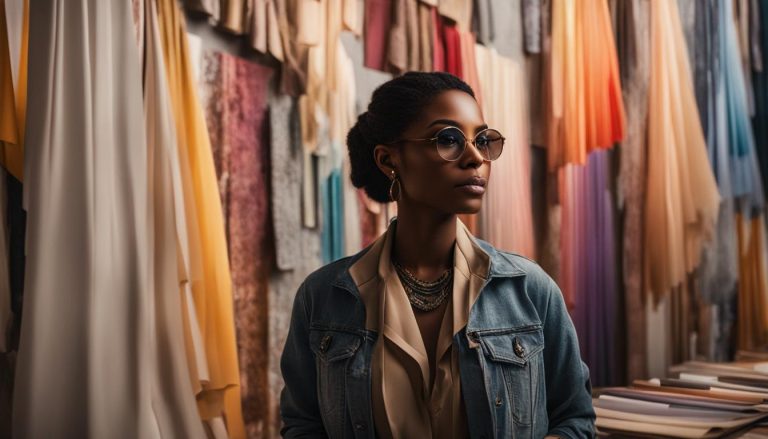
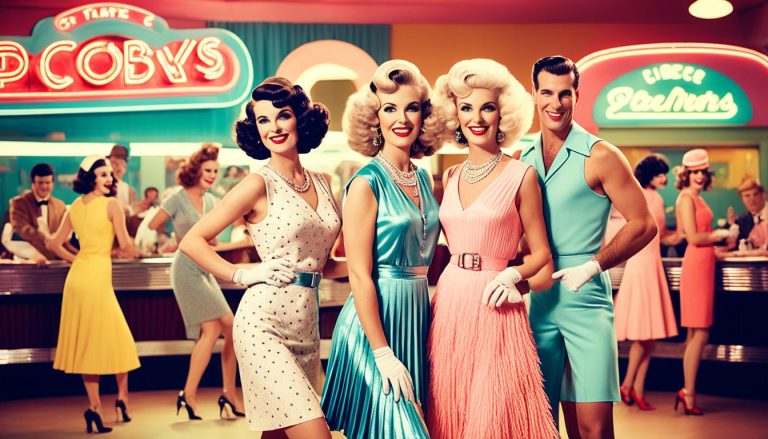


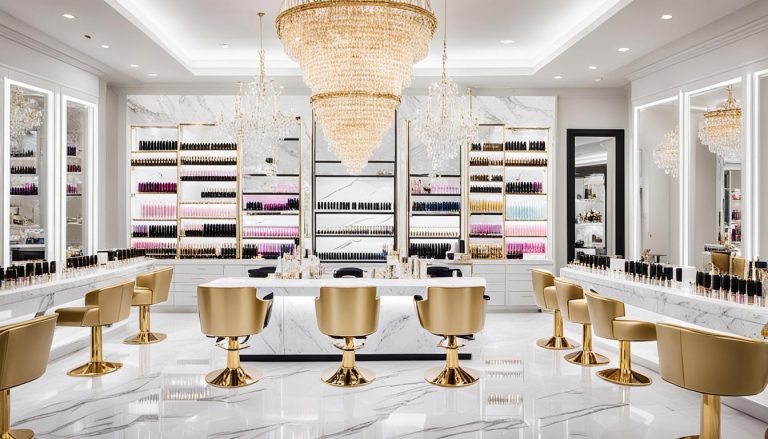
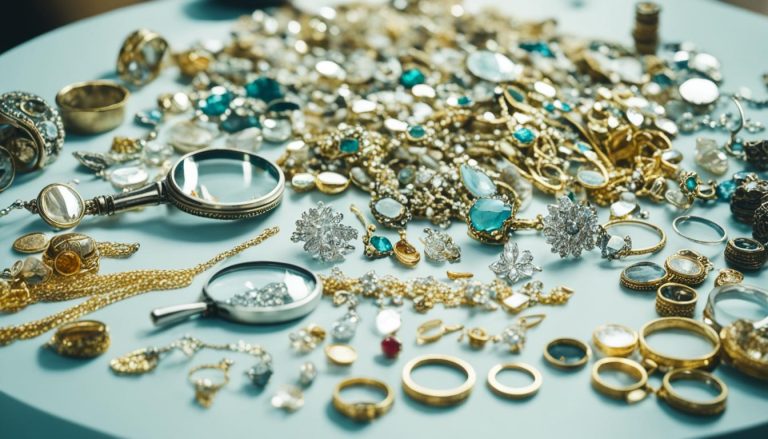


+ There are no comments
Add yours